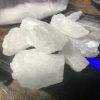Heroin
$240.00 – $1,200.00Price range: $240.00 through $1,200.00
Heroin: Understanding Its Effects, Risks, and Impact on Society
Heroin is a powerful opioid drug derived from morphine, a naturally occurring substance found in the opium poppy plant. It is classified as a Schedule I drug in many countries due to its high potential for addiction and lack of accepted medical use. Despite its dangers, heroin remains one of the most commonly abused opioids worldwide.
How Heroin Works
Heroin affects the brain by binding to opioid receptors, which are responsible for pain relief and feelings of pleasure. Upon entering the body, it is rapidly converted into morphine, leading to an intense sense of euphoria. This is why heroin is highly addictive—users often chase the initial “rush” they feel after taking the drug.
Effects of Heroin Use
The immediate effects of heroin include:
– Intense euphoria and relaxation
– Warm, flushed skin
– Dry mouth and heavy limbs
– Nausea and vomiting
– Slowed breathing and heart rate
Over time, continued use of heroin leads to tolerance, meaning higher doses are needed to achieve the same effects. This significantly increases the risk of overdose, which can result in respiratory failure and death.
Long-Term Risks and Health Consequences
Chronic heroin use can have severe physical and psychological effects, including:
– Addiction: One of the most addictive substances, heroin can lead to severe dependence.
– Collapsed veins: From repeated injections.
– Liver and kidney disease: Due to toxicity and impurities in street heroin.
– Mental health issues: Depression and anxiety are common in long-term users.
– Infectious diseases: Shared needles increase the risk of HIV/AIDS and hepatitis.
The Dangers of Heroin Overdose
Heroin overdoses are a leading cause of opioid-related deaths. Symptoms include:
– Extreme drowsiness or unconsciousness
– Slow or stopped breathing
– Blue lips and fingertips (due to lack of oxygen)
– Weak pulse and low blood pressure
The opioid reversal drug naloxone (Narcan) can counteract an overdose if administered in time, which is why many harm reduction programs distribute it to at-risk individuals.
Treatment and Recovery
Overcoming heroin addiction requires medical intervention and support. Common treatment options include:
– Medication-Assisted Treatment (MAT): Drugs like methadone, buprenorphine, and naltrexone help reduce cravings and withdrawal symptoms.
– Behavioral Therapy: Counseling and rehabilitation programs address the psychological aspects of addiction.
– Support Groups: Programs like Narcotics Anonymous (NA) provide peer support for long-term recovery.
Final Thoughts
Heroin is an extremely dangerous and addictive substance that has devastating consequences for individuals and society. Public health initiatives, education, and access to treatment are essential in combating the opioid crisis and helping those struggling with addiction find a path to recovery.
| Quantity | 3 g, 5 g, 10 g, 20 g |
|---|
Related products
Other Psychedelics
Other Psychedelics
Other Psychedelics
Other Psychedelics
Other Psychedelics
Other Psychedelics
Other Psychedelics




















